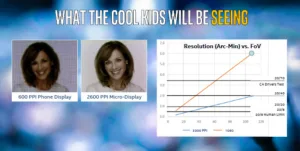 Stephen Salzman is from Intel Capital. He started by saying that the world is in 3D with immersive sound, so that is how computing should be. He agrees with earlier speakers that AR, MR and VR are all points on a spectrum. End users don’t care about the distinction.
Stephen Salzman is from Intel Capital. He started by saying that the world is in 3D with immersive sound, so that is how computing should be. He agrees with earlier speakers that AR, MR and VR are all points on a spectrum. End users don’t care about the distinction.
The reason it’s interesting is that “its so important”. There are amazing applications in entertainment, automotive (to show options to buyers) and in medical and other industries. It takes around three years to develop a good game and consumer headsets have only been around for 1.5 years, so when you hear that there is not much really great gaming content around, yet, then bear in mind “You ain’t seen nothing yet”, to quote the song.
We are still a long way from reaching the full potential of the market. Why? What was successful before? As an example, Salzman looked back at VHS etc.
- VR must be easy to use. At the moment, VR is complicated and the room has to be organised and wired up. Living room infrastructure will go away with “inside out” tracking in the future and that will help. The cables will go away – the need for them is currently a big complaint from users. Wireless VR is a “when, not if”, Salzman said.
- Systems have to be affordable, but a current state of the art PC for VR costs $2,000 for a high end PC and headset. Intel teamed with Microsoft to develop a $300 – $400 headstat that can work with current PCs and it should be available this year.
- VHS had a lot of porn – so does VR! VR content is good at killing robots and zombies, but new kinds of content is arriving. However, VR is still short of “habit-forming” content and the quality is not quite there yet. Social VR may be a part of the developments of really compelling content.
- Commercial VR is also important. Surgeons have found VR ‘life changing’ – previously it took six years of training on cadavers for brain surgeons, but you never know exactly what issues a cadaver will expose. Training can ensure there is a way to provide a known problem.
- Pagani is selling $2 million supercars and is using VR to minimise the need for demo inventory for dealers.
- Platforms have be built on open standards so Khronos is working on the OpenXR interface and this should be available by around 2018 and that will help to avoid conflicting standards.
- People don’t want headsets – they want to look cool. They need to be stylish, lightweight and provide AR/VR or MR depending on the application. Foveated rendering is going to be important and so are high quality displays.
- Resolution has to be high with life like graphics and no screen door effect. The application needs 1 arc minute of resolution, Salzman believes.
Intel expects much higher resolution displays
In response to a question, Salzman said that in terms of market development over time, he could only give personal views. This year the 1 million sales of last year should go up to 3-4 millions and that kind of rate will last for several years. However, it’s hard to predict. When Janet Jackson had her famous “wardrobe malfunction”, the FCC clamped down on what could be broadcast. Howard Stern, the famous ‘shock jock’ jumped to satellite radio and that quickly grew the market to 150 million radios, so external events can influence product take up!
An example of an incremental improvement in medical apps, for example, is improving patient satisfaction – that generates a lot more revenue for hospitals in the US because of rebates from the insurers to medical suppliers.
Gaming is important and Intel sponsors the Extreme Masters Tournament in Katowice, Poland and there were 170K attendees and 43 million viewers online. The Unspoken, apparently a hot new game, was added to an Australian game tournament. Products are starting to be designed for eSports, in the West but also in China where there are 3,000 arcades/cafes for gaming. China has 150K internet cafes because people have fewer PCs.
Trinity VR has collected analytic data on professional baseball and that has meant that it has been able to develop animations using actual data to show specific real pitchers. Just imagine, Salzman said, how popular this could be in sports bars – can you hit the winning pitch based on an actual game and play?
Lightfield VR displays may be coming along – there are some exciting things coming using lightfield technology. They make huge demands on display driving and computing (which should suit Intel – Man. Ed.)

